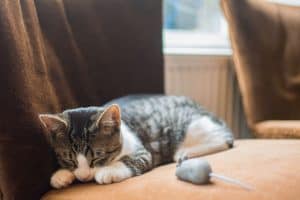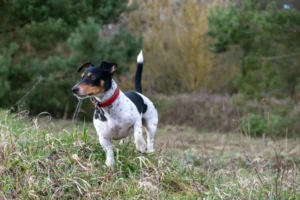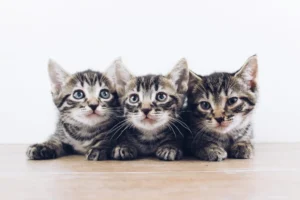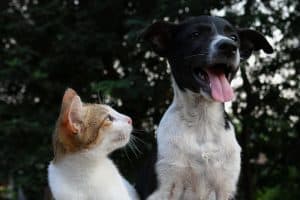Cats play a crucial role in maintaining balance in ecosystems around the world. But why are cats so important to the ecosystem?
Cats as Predators:
Natural Rodent Control
Cats play a crucial role in natural rodent control by hunting down mice, rats, and other small pests that can wreak havoc on ecosystems. These feline hunters help keep rodent populations in check, preventing them from overrunning homes, farms, and natural habitats. By instinct, cats are skilled hunters, using their keen senses and agility to track down and capture rodents efficiently.
In addition to preventing property damage, rodent control by cats also has the added benefit of reducing the spread of diseases carried by these pests. Rodents can transmit harmful viruses and parasites to humans and other animals, posing a serious health risk. By keeping rodent populations under control, cats contribute to maintaining a healthier and safer environment for all.
Cats as Contributors: – Cats help maintain a balanced ecosystem by controlling rodent populations. – Their hunting instincts effectively keep pests in check, preventing damage and disease spread.
Impact on Bird Populations
The relationship between cats and bird populations is a complex and often debated topic within the ecosystem. While cats are natural predators and will hunt birds as part of their hunting behavior, their impact on bird populations varies depending on several factors.
It is important to note that not all cats are avid bird hunters, and some prefer to focus on rodents or other small animals. Additionally, well-fed cats are less likely to hunt birds for food, reducing their impact on avian species. However, it is essential for cat owners to be aware of their pets’ hunting habits and take steps to mitigate any potential harm to bird populations.
When considering cats’ impact on bird populations, it is crucial to strike a balance between the natural behavior of feline predators and the conservation of vulnerable bird species. Through responsible pet ownership and efforts to protect bird habitats, we can work towards maintaining a healthy ecosystem where both predators and prey can coexist harmoniously.
Seed Dispersal
Cats play a crucial role in seed dispersal through their interactions with flora. As cats move through their environment, they unknowingly carry seeds on their fur or paws to new locations. This aids in the spreading of plant species, promoting plant diversity and ecosystem health. By assisting in seed dispersal, cats contribute to the regeneration of vegetation and help maintain a balanced ecosystem.
Behavioral Adaptations
Cats possess unique behavioral adaptations that make them valuable contributors to various ecosystems. Their hunting instincts help control small mammal populations, preventing overpopulation that can disrupt the delicate balance of an ecosystem. Additionally, cats’ grooming habits aid in controlling insect populations, further contributing to the overall health of the ecosystem. Their presence helps maintain the biodiversity and stability of the environment.
Cats in Urban Environments:
- Rodent Control: In urban areas, cats serve as natural pest controllers, keeping rodent populations in check. This helps prevent damage to infrastructure and reduces the spread of diseases carried by rodents.
- Companionship: Cats in urban environments provide companionship to residents, offering stress relief and improving mental well-being. Their presence can create a sense of community among neighbors and enhance the overall quality of life in urban settings.
- Wildlife Conservation: While cats in urban environments can pose a threat to local wildlife, responsible pet ownership and management practices can help mitigate these risks. By implementing measures such as keeping cats indoors or using collars with bells to reduce hunting success, urban cat populations can coexist more harmoniously with native wildlife. This aids in protecting biodiversity and preserving the natural ecosystem within urban areas.
Urban Pest Control
Cats play a crucial role in urban pest control by keeping populations of pests like cockroaches and rats in check. Their natural hunting instincts make them effective predators, helping to reduce the spread of disease and damage to property caused by these pests. By keeping pest populations under control, cats contribute to a cleaner and healthier urban environment for humans to live in.
Community Relationships
When it comes to community relationships, feral and stray cats form an integral part of the urban ecosystem. Humans often develop symbiotic relationships with these cats, providing food and shelter in exchange for pest control services. It is essential to implement coexistence strategies that ensure the well-being of both cats and humans. By working together, we can create a harmonious balance in the urban environment that benefits all parties involved.
Cats and Biodiversity:
Cats have been known to impact local biodiversity when left unchecked in natural environments. It is important to implement responsible pet ownership practices, such as keeping cats indoors or supervised outdoors, to protect native wildlife from predation. By being mindful of the impact cats can have on biodiversity, we can preserve the delicate balance of ecosystems and support the coexistence of all species.
Protected Species Conservation
Cats play a crucial role in protected species conservation by helping control invasive predators that threaten vulnerable wildlife populations. By keeping the numbers of pests like rats, mice, and other small mammals in check, cats assist in preserving the delicate balance of ecosystems and safeguarding endangered species. Their natural hunting instincts make them valuable allies in protecting biodiversity and ensuring the survival of threatened wildlife.
Habitat Management
In addition to aiding in protected species conservation, cats contribute to habitat management by regulating prey populations and preventing ecosystem imbalances. By keeping prey numbers under control, cats help maintain the health and stability of habitats, preventing overcrowding and resource depletion. This proactive approach to managing ecosystems helps sustain the intricate web of life within natural environments, promoting overall ecological harmony.
Unique Facts about Cats: – Cats are skilled hunters: With their keen senses and agile bodies, cats are highly effective predators capable of catching prey with precision and stealth. – Cats have diverse hunting strategies: From ambush hunting to stalking, cats employ a variety of techniques to capture their prey, showcasing their adaptability and intelligence. – Cats are territorial animals: Cats mark their territory through scent marking and vocalizations, establishing boundaries that they defend against intruders to protect their hunting grounds. – Cats have a strong prey drive: Driven by their innate hunting instincts, cats exhibit a natural urge to hunt and engage in predatory behavior, reflecting their essential role in ecosystem dynamics.
Remember to provide outdoor cats with proper care and supervision to minimize their impact on local wildlife populations. By understanding and appreciating the unique role of cats in the ecosystem, we can promote coexistence between domestic felines and the natural world.
Hunting Techniques
Cats are masterful hunters, with sharp claws and keen senses that make them efficient predators. Their hunting techniques have evolved over time to suit various environments, from stealthy stalking to lightning-fast pouncing. Cats possess incredible agility and speed, allowing them to pursue and catch prey with precision. Their ability to control their muscles with precision enables them to execute quick, calculated movements, ensuring a successful hunt.
One fascinating hunting technique of cats is their quiet approach to prey, minimizing any noise to avoid detection. They use their whiskers to sense vibrations in the air, helping them pinpoint the location of their target. Cats also have exceptional night vision, allowing them to hunt effectively in low-light conditions. By keeping the ecosystem in check through hunting, cats help control the population of various species, contributing to the balance of the ecosystem.
Communication Signals
Cats communicate with a nuanced language of tail flicks, eye movements, and ear positions, signaling their intentions and emotions to other species in the ecosystem. Through vocalizations such as purring, meowing, and hissing, cats convey their needs, whether it be for food, attention, or warnings to potential threats. These communication signals play a crucial role in shaping ecosystem dynamics by establishing hierarchies, territorial boundaries, and social bonds among different species.
When cats engage in grooming behaviors towards other animals, they are not only establishing social connections but also contributing to the health and cleanliness of the ecosystem. Cats’ communication signals can also warn other species about potential dangers or predators in the area, helping maintain a sense of vigilance and cooperation within the ecosystem. By understanding and interpreting these signals, we can gain valuable insights into the intricate interactions that shape the delicate balance of the ecosystem.
Alex, a passionate animal lover, has experience in training and understanding animal behavior. As a proud pet parent to two dogs and three cats, he founded AnimalReport.net to share insights from animal experts and expand his knowledge of the animal kingdom.









